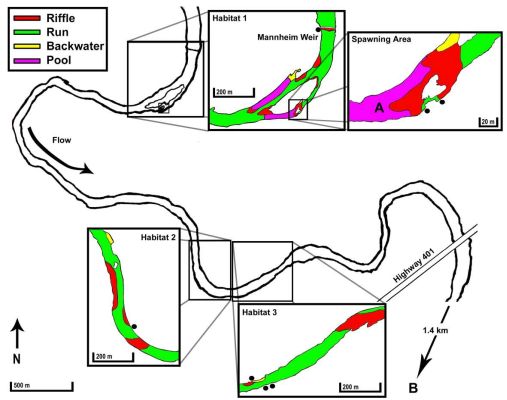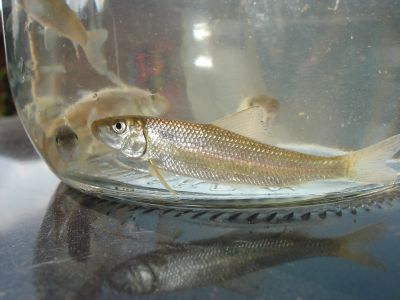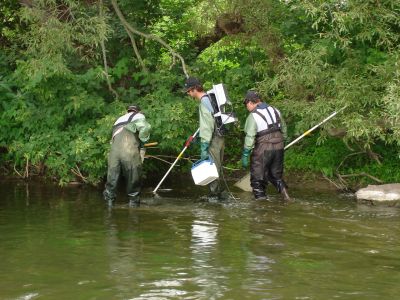Habitat Utilization, Movement and Use of Groundwater Seepages by Larval and Juvenile Black Redhorse (Moxostoma duquesnei)
Black redhorse (Moxostoma duquesnei) larval and juvenile habitat was characterized in the Grand River, Ontario from June to September 2007-2012. Similar to adult black redhorse and their congeners, larval black redhorse were most likely to be located in clean, clear, stable runs with low to moderate flow, over pebble, gravel and cobble substrate, mixed with sand. Areas (n = 22) where 0+ black redhorse were observed and collected were 1.4 ± 0.2 m from shore, with a mean water temperature of 22.0 ± 0.5°C, mean depth of 0.20 ± 0.02 m and mean water velocity of 0.12 ± 0.05 m/s. . Larval and juvenile black redhorse occupied riffles, runs, pools and backwater areas; however, there was a strong preference for runs. Juvenile black redhorse moved upstream in the early evening and at night to over-wintering areas in the Grand River in November when water temperature approached 5°C. The persistence of black redhorse populations in the Grand River may be related to the presence of groundwater, which provides refuge from extreme temperature and poor water quality during the summer.





